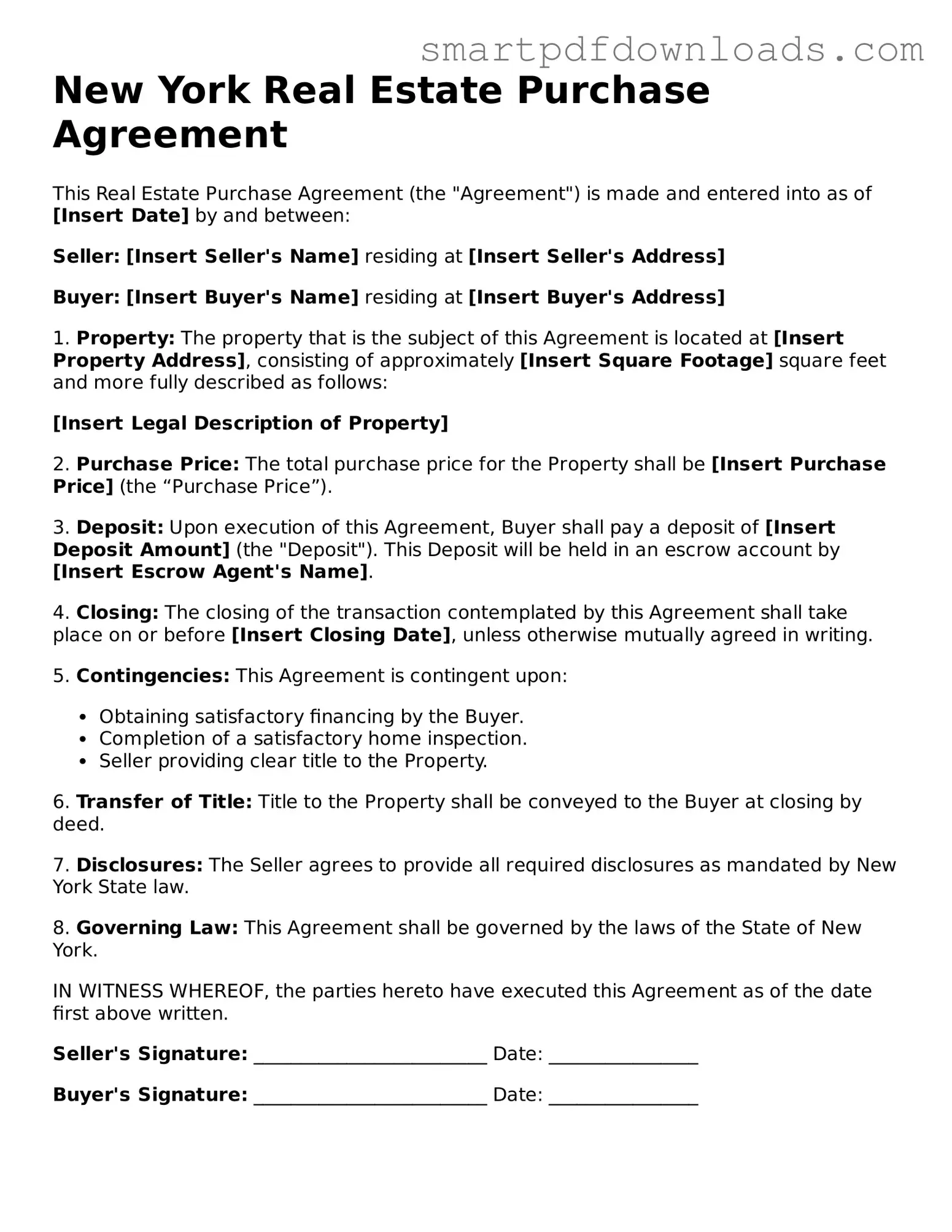New York Real Estate Purchase Agreement
This Real Estate Purchase Agreement (the "Agreement") is made and entered into as of [Insert Date] by and between:
Seller: [Insert Seller's Name] residing at [Insert Seller's Address]
Buyer: [Insert Buyer's Name] residing at [Insert Buyer's Address]
1. Property: The property that is the subject of this Agreement is located at [Insert Property Address], consisting of approximately [Insert Square Footage] square feet and more fully described as follows:
[Insert Legal Description of Property]
2. Purchase Price: The total purchase price for the Property shall be [Insert Purchase Price] (the “Purchase Price”).
3. Deposit: Upon execution of this Agreement, Buyer shall pay a deposit of [Insert Deposit Amount] (the "Deposit"). This Deposit will be held in an escrow account by [Insert Escrow Agent's Name].
4. Closing: The closing of the transaction contemplated by this Agreement shall take place on or before [Insert Closing Date], unless otherwise mutually agreed in writing.
5. Contingencies: This Agreement is contingent upon:
- Obtaining satisfactory financing by the Buyer.
- Completion of a satisfactory home inspection.
- Seller providing clear title to the Property.
6. Transfer of Title: Title to the Property shall be conveyed to the Buyer at closing by deed.
7. Disclosures: The Seller agrees to provide all required disclosures as mandated by New York State law.
8. Governing Law: This Agreement shall be governed by the laws of the State of New York.
IN WITNESS WHEREOF, the parties hereto have executed this Agreement as of the date first above written.
Seller's Signature: _________________________ Date: ________________
Buyer's Signature: _________________________ Date: ________________
